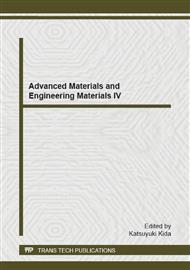p.403
p.408
p.412
p.416
p.420
p.424
p.429
p.433
p.437
Anodic Bonding of Silicon-Pyrex and Silicon-Soda Lime Glass at Room Temperature
Abstract:
Silicon wafer bonding opens possibilities in creating MEMS devices and anodic bonding is found to be the most relevant wafer bonding technique process in constructing and packaging MEMS. This paper reports on the bond strength comparison between silicon and different glass based materials via anodic bonding. Two types of glass based surface used pyrex and soda lime glass. Bonding temperature is set at room temperature while a high direct current voltage of 15kV. Experiments were carried out using an in-house designed anodic bonder and the bond strength were measured using a bond strength tester. The anodic approach process was done in two sets which are before and after the cleaning process for each sample. Results show that all samples showed higher bond strength after the cleaning process. Silicon-soda lime glass have higher bonding strength of 1950 Pa compared to silicon-pyrex bonding which only gives 1850 Pa of bond strength.
Info:
Periodical:
Pages:
420-423
Citation:
Online since:
December 2014
Keywords:
Price:
Сopyright:
© 2015 Trans Tech Publications Ltd. All Rights Reserved
Share:
Citation:


